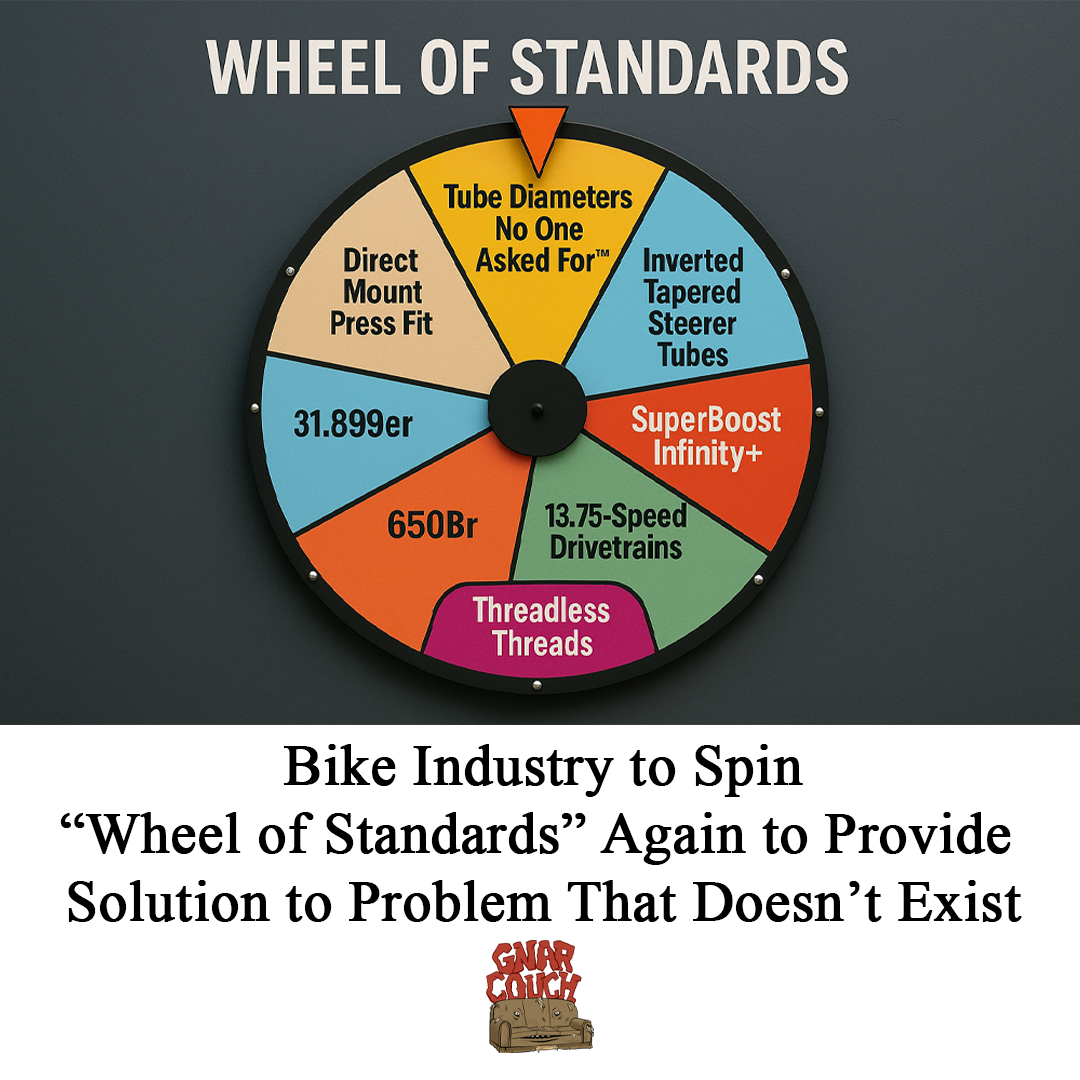The mountain bike industry confirmed Monday it will soon unveil a new equipment standard, chosen by spinning what insiders call the “Wheel of Standards,” a device used to determine the next mandatory upgrade for mountain bikers.
The standard itself has not yet been revealed. However, executives assured riders that the forthcoming change will provide measurable performance gains. Among the benefits being promoted are a “stiffer rear end,” a 69 percent improvement in “internal rolling resistance,” and a 4.20-fold reduction in brake fade.
Company engineers admitted the numbers were generated before the wheel was spun. “We don’t know what the new standard is yet,” one senior designer said on condition of anonymity. “But we can confirm it will require a completely new bike. That part is non-negotiable.”
The Wheel of Standards, a six-foot spinning disk housed in the basement of an undisclosed component manufacturer, includes options such as SuperBoost Infinity+, 13.75-speed drivetrains, and inverted tapered steer tubes. Industry sources say whichever segment the wheel lands on will be adopted across product lines within months.
Marketing departments are already preparing campaigns touting the improvement as “revolutionary” and “essential.” Trade publications are expected to echo those claims, despite not yet knowing the details.
Local bike shops anticipate customers will ask whether the new spacing, threading, or diameter is backward compatible with existing equipment. Mechanics confirmed it will not be.
The new standard is expected to be announced at the Sea Otter Classic, where it will immediately render most of today’s high-end bicycles outdated.
“Sure, your $9,000 trail bike is fine,” one marketing official said. “But it doesn’t have the new standard. And that means it’s already obsolete.”
Industry analysts say the cycle is unlikely to end soon. The Wheel of Standards is expected to continue spinning on a regular basis until most riders own at least a dozen incompatible bicycles, none of which can share a single part.



























